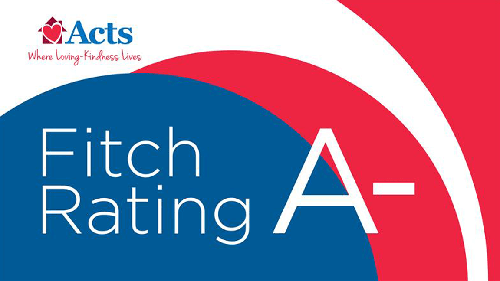The True Cost of Retirement

We all want a comfortable retirement where we don’t have to worry if our income will support our lifestyle. And we all want to be able to spend our retirement doing what we want, considering we’ve worked hard for it.
But there is a little more work you’ll have to do before retiring. You’ll have to work to figure out exactly how much money you need to live that lifestyle you desire. You’ll have to determine your true cost of retirement.
Here’s what you need to know about the true cost of retirement, what you should be looking out for, and how to ensure you can afford the quality of life you want.
Housing Costs Are Rising
Many people close to retirement feel they’re in good shape when it comes to housing costs. If you’ve got your own home, one you’ve paid off the mortgage (or nearly have), you’ve got nothing to worry about when it comes to the costs of maintaining that property throughout your retirement. Or so you think! The truth is that living in that family house of yours is going to start costing you more than you realize, even if it’s “paid off.”
You know what it takes to keep a house in good shape, thanks to your status as a homeowner for many years. You’ve got to foot the bill for utilities like heat, electricity, water, and trash removal. Of course amenities like cable television or internet access add to that total as well. Plus there’s regular outdoor maintenance, like getting your gutters cleaned, your property landscaped, your walkway shoveled, unless you’re doing all that yourself. Then what happens if you need to replace your roof, your boiler, some other major appliance? Have we mentioned property taxes? Those don’t go away – ever.
This is not intended to be negative or to detract from the joy your home brings you. It’s simply to ensure you are estimating for the true cost of retirement, even if you no longer have a mortgage.
Healthcare Costs Are Also Rising

So we’ve covered how housing costs are still a major factor when it comes to retirement. But there’s another factor at play as well — healthcare. Yes, Medicare is available for retirees, but it’s not going to provide you comprehensive coverage if you need anything more routine than primary care checkups and the like. If you have to be hospitalized, you may need to foot the bill yourself unless you have additional insurance.
This means budgeting for the costs of that insurance through whatever provider you choose, such as Medicare Part D or something else entirely. Everyone’s physical needs change as we age, and if you want to live out your retirement in comfort and style, you need to stay on top of your health and be prepared for if anything goes wrong. You don’t want to have to pay out of pocket for medical care, so you’ll need to ensure you’re budgeting for supplemental insurance.
Incidentals
We talked about how you should include incidentals of cable TV and heat when estimating the cost of retirement. But those aren’t the only costs you need to think about. After all, you have to eat, don’t you? And perhaps would prefer to eat out more than cook? Make sure you have a budget for food. And for common activities like going to the movies or seeing a show, a gym membership, trips to the museum, that writing class you’ve always wanted to take, traveling, a candy budget for when the grandkids visit. All of that should be accounted for, even if it’s generally, so that you know your expenses and thus how much money you need to maintain those activities.
Social Isolation has a Cost as Well
When you retire, you’re free from the daily grind. But that also means you’re not getting the same daily social interaction as you might be used to. For example, work colleagues aren’t there to talk to anymore if you aren’t in the office working with them! And many of your non-work friends and family may not be retired yet. This means you’ve got to prepare yourself by having other social outlets at the ready – otherwise, you could end up feeling isolated and alone at a time of your life that you should be celebrating.
Being socially isolated has a negative impact on both your emotional and your physical health, so it’s up to you to ensure you have ways to socialize. This can be challenging sometimes if you don’t know where to look.
How to Combat These Very Real Costs
Is this adding stress? Please don’t panic– there are plenty of ways to prepare for retirement so that you don’t have to worry about these issues as much. We’ve got some great strategies for managing these costs and finding ways to live a fully satisfying retirement life. Here are some of the best solutions we have right now to combat these very real costs.
Think About Downsizing

A large home might have made sense when you were raising your family, but today you’ve got way too much space – and a big home costs more to keep up. This is true even if you’ve paid off the mortgage. So downsizing is perhaps your best bet. You’ll still have your memories of the family you raised there, that doesn’t go away with the sale of a home.
Downsizing can take the form of a smaller home, perhaps even a townhouse or apartment. This will typically give you less property taxes, less utility costs, possibly less to maintain, etc. As long as the home is cheaper than your current house, it should also give you a good amount of money to add to your nest egg.
Downsizing can also take the form of an independent living community. This is in many ways similar to moving into a smaller home, townhouse, or apartment, but retirement communities come with the added advantage of built-in amenities and access to expanded social circles.
In fact, quality retirement communities cover a lot of the incidentals we discussed. Fine dining can be included, as well as fitness centers, swimming pools, and even classes like learning a new language and hobbies like art or woodworking. When compared to the full cost of retiring in home, communities are very affordable!
Choose a Solid Care Plan
We talked earlier about healthcare costs. Some retirement communities can help with that. Continuing care retirement communities (CCRCs) provide a continuumum of care. That means you enter as a healthy, active retiree, enjoying the swimming pool and putting green, but should you ever need a higher level of care such as assisted living or skilled nursing care, you will receive it, on the same campus, for no increase to your costs simply because you have an increased health need.
This makes it much easier for you to budget for your retirement, because you know a huge financial element is already planned for.
CCRCs also account for other monthly charges through amenities provided. For example, many offer fitness centers, pools, exercise classes, restaurants and meal plans, leisure activities, and even allocate affordable utilities into one consistent monthly fee. Better yet, you’re not worried about the surprises of home maintenance costs or property taxes. This helps you maintain a steady budget each month so expenses become more predictable.
We hope this resource helped begin to give a sense of some of the less considered elements of retirement that should be budgeted for. The best way to enjoy the lifestyle you’ve always dreamed of is to be financial prepared to sustain it.
If you’d like to learn more about a continuing care retirement community that will absorb most of your expenses, feel free to explore the 26 campus of Acts Retirement-Life Communities.






